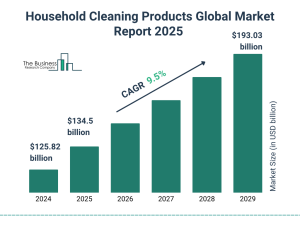Wholesale Perchloroethylene Pricing Trends
Perchloroethylene, commonly known as PERC, is a key solvent widely used in dry cleaning, metal degreasing, and industrial processes. Understanding wholesale pricing trends for perchloroethylene is essential for businesses that depend on this chemical to manage costs, forecast budgets, and negotiate effectively with suppliers. In this article, we explore the factors influencing perchloroethylene pricing, recent market trends, and tips to navigate price fluctuations in the wholesale market.
Overview of Perchloroethylene Pricing
Perchloroethylene pricing is influenced by various supply and demand dynamics, raw material availability, production costs, and regulatory policies. Wholesale prices tend to fluctuate based on these factors, impacting industries that rely on bulk purchases.

Wholesale Perchloroethylene Pricing Trends
Factors Affecting Wholesale Prices
- Raw Material Costs: The cost of feedstock chemicals like ethylene and chlorine directly impacts perchloroethylene production expenses.
- Production Capacity: Manufacturing limitations or expansions can tighten or ease supply, influencing prices.
- Regulatory Environment: Environmental regulations regarding solvent emissions and hazardous materials handling can increase compliance costs for producers.
- Global Supply Chain: Disruptions in logistics, shipping delays, or geopolitical tensions can affect the availability and price of perchloroethylene.
- Demand Fluctuations: Changes in demand from key sectors like dry cleaning or automotive industries also play a major role in pricing.
Recent Trends in Wholesale Perchloroethylene Pricing
The perchloroethylene market has seen several notable trends over the past few years that have shaped wholesale pricing.
Impact of Environmental Regulations
Increasing environmental concerns have led to stricter regulations on perchloroethylene use and emissions, especially in the European Union and North America. Compliance has raised production costs and restricted supply, pushing prices upward in some regions.
Shift Toward Sustainable Alternatives
As industries explore greener solvents, demand for perchloroethylene has seen some decline, particularly in markets prioritizing sustainability. This shift can affect wholesale prices by altering demand patterns.
Supply Chain Challenges
Global supply chain disruptions, including shipping delays and raw material shortages, have created volatility in perchloroethylene availability, causing price fluctuations. Businesses have had to adjust purchasing strategies accordingly.
Market Recovery Post-Pandemic
Following the COVID-19 pandemic’s initial disruption, industries reliant on perchloroethylene have gradually rebounded, leading to increased demand and rising wholesale prices. However, recovery rates vary by region and sector.
Regional Differences in Pricing
Wholesale perchloroethylene pricing varies across regions due to local regulations, production capabilities, and market demand.
North America
North America maintains significant production facilities with stringent environmental regulations. Pricing here tends to be higher due to compliance costs but benefits from stable supply chains.
Europe
Europe has strict environmental policies, which have led to reduced use of perchloroethylene and increased costs for producers. Prices in Europe reflect these regulatory pressures and a growing emphasis on green alternatives.
Asia-Pacific
Asia-Pacific is a major hub for chemical production, with China and India leading perchloroethylene manufacturing. Competitive pricing and growing industrial demand have shaped a dynamic pricing landscape in this region.
Tips for Managing Wholesale Perchloroethylene Pricing Risks
Price volatility can impact business budgets and operations. Here are strategies to mitigate risks:
1. Establish Long-Term Supplier Contracts
Negotiating fixed-price or volume-based contracts can provide price stability and secure supply over time.
2. Monitor Market Trends Regularly
Stay informed about industry reports, regulatory changes, and geopolitical events affecting perchloroethylene markets to anticipate price movements.
3. Diversify Supplier Base
Working with multiple suppliers across regions can reduce risks associated with supply chain disruptions or regional price spikes.
4. Optimize Inventory Management
Maintaining optimal inventory levels helps avoid urgent purchases at peak prices and balances storage costs.
5. Explore Alternative Solvents
Evaluate the feasibility of alternative, environmentally friendly solvents that may reduce reliance on perchloroethylene and mitigate pricing risks.
Future Outlook for Wholesale Perchloroethylene Pricing
The perchloroethylene market is expected to experience moderate growth influenced by regulatory trends, technological advancements, and evolving industrial demand.
Increasing Regulatory Pressures
Environmental regulations are anticipated to become more stringent, which could restrict supply and increase production costs, potentially driving prices higher.
Technological Innovations
Advances in manufacturing efficiency and emission control technologies may help mitigate cost increases and stabilize prices over the long term.
Growing Demand in Emerging Markets
Emerging economies with expanding industrial sectors may drive increased demand, influencing global pricing dynamics.
Conclusion
Understanding wholesale perchloroethylene pricing trends is crucial for businesses relying on this solvent. Factors such as raw material costs, regulations, supply chain challenges, and market demand all contribute to price fluctuations. By staying informed and adopting strategic purchasing and risk management practices, companies can better navigate pricing volatility, ensuring a steady supply of perchloroethylene at competitive costs.
Keeping an eye on regional differences and future market developments will further empower buyers to make data-driven decisions and maintain operational efficiency in an evolving chemical market.
